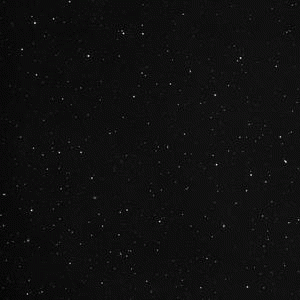IC 85

Overlaid DSS image of IC 85, 60' x 60' with north at top and west to the right
Aladin viewer for the region around IC 85
| Type | Unknown |
|---|---|
| Magnitude | Right Ascension | 1h 11' 49.6" (2000) |
| Declination | 0° 27' 8" N |
| Constellation | Cetus |
| Classification | eF, close to * 8 |
Observing Notes
Harold Corwin
IC 85 may not exist, though I mistook it for a star many years ago when I skimmed the field in Edinburgh. Here is the full story.
Bigourdan mentions the object four times in his publications. First, it appears as the 113th object in a list of his "novae" published in Comptes Rendus 112, 647, 1891. He gives the position as 01 04 37, 91 13 (for 1860, just as Dreyer copied it correctly into the first IC) and describes it simply as "m = 13.5; traces of nebulosity near BD-01 156." (The star is also HD 7162) The position precesses to 01 11 45, -00 29.4 for J2000.0. I've called this "IC 0085.1" in my position tables, though adopt another of Bigourdan's positions for it (more below -- keep reading!).
Looking into Bigourdan's massive introduction, we find in his 2nd table of new nebulae this listing for his 113th "nova" where he specifically calls it "85'" (meaning IC 85; this table was prepared long after the 1st IC appeared): "01 07 33 -00 47, [no magnitude]; 1888 Dec 6, traces of nebulosity." The position is for 1900.0, and precesses to 01 12 39, -00 15.1 for J2000.0, notably different from that in the Comptes Rendus list. I've called this position "IC 0085.2" in my tables. This is the only one of Bigourdan's "nova" Big 113 positions with nothing within an arcminute that he could have seen.
Then, it appears in his big tables of observations as a single sighting on 6 December 1888 with no measurement and the description "Star 13.5 indicated above [in the description for and] near NGC 430 at PA = 125 deg, d = 2.7 arcmin; it could be preceded by an extremely faint nebula; this star itself could be a little nebulous." His offset implies a position of 01 13 08.8, -00 16 42 (J2000.0), assuming the UCAC position for NGC 430. There is nothing in Bigourdan's place, though there is a faint star (perhaps a blended double) somewhat closer to the galaxy at PA = 115, d = 2.0. Bigourdan's position is called "IC 0085.3" in my position tables.
Finally, in his list of "Complementary Measures" given in his big introduction, there is an entry for a "nova" found on the night of 6 Dec 1888 with an estimated measurement of -0m 05.2s, -0' 45" from BD-01 156. Going through the reduction to derive a position for this "nova" from a modern position for the comparison star gives 01 11 45.9, -00 27 28 for J2000.0, which is just the IC position, given with a bit more precision. I've taken this as the position for "IC 0085.1" in my position tables as the IC entry seems to refer to this object and the neighboring BD star.
Seeing this star on the red DSS2 image in January 2018, I am struck by how faint it is, and how close to the HD star it is. I doubt very much that Bigourdan could have seen this. Could this faint star perhaps have lent the impression of nebulosity to the brighter one? A visual observer would have to evaluate the field to answer this question.
So, Bigourdan is referring to at least two different "novae" -- perhaps three! -- in the area around NGC 430 and BD-01 156, and has apparently conflated the several discordant observations under the single number "113" in his lists of new nebulae.
And, after all of that, there are only faint stars near any of his estimated positions that he could have reasonably seen. So, we are probably stuck with another "Not found" IC object.
Other Data Sources for IC 85
Nearby objects for IC 85
Credits...
Drawings, descriptions, and CCD photos are copyright Andrew Cooper unless otherwise noted, no usage without permission.
A complete list of credits and sources can be found on the about page
IC 85